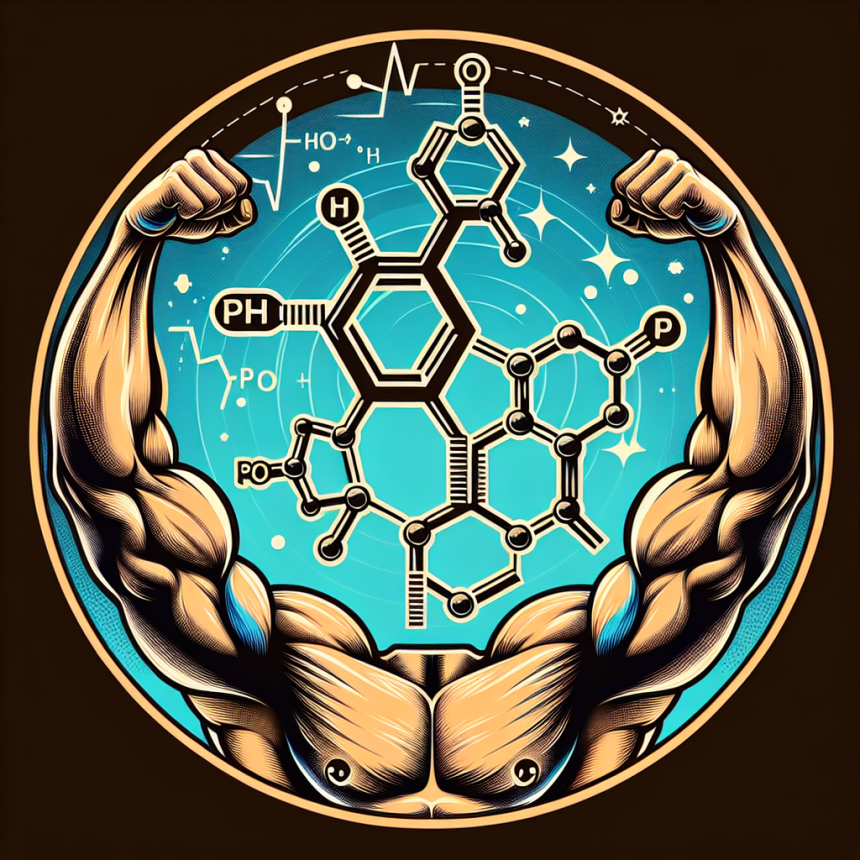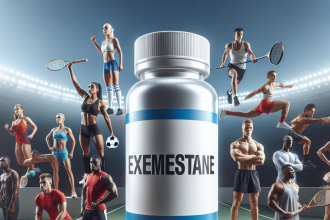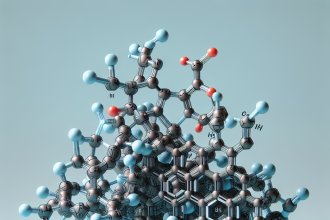-
Table of Contents
Somatropin: Ultimate Muscle Enhancer
Somatropin, also known as human growth hormone (HGH), has gained popularity in the world of sports and bodybuilding as the ultimate muscle enhancer. This synthetic hormone, produced by the pituitary gland, plays a crucial role in growth and development. However, its use in the sports industry has sparked controversy and debate. In this article, we will explore the pharmacokinetics and pharmacodynamics of somatropin, its benefits and risks, and the current regulations surrounding its use in sports.
The Science Behind Somatropin
Somatropin is a recombinant form of human growth hormone, meaning it is produced in a laboratory using genetic engineering techniques. It is identical to the natural growth hormone produced by the body and has the same effects on the body’s tissues and organs. Somatropin works by binding to specific receptors on cells, stimulating the production of insulin-like growth factor 1 (IGF-1). IGF-1 is responsible for promoting cell growth and division, particularly in muscle and bone tissue.
The production of somatropin is regulated by the hypothalamus and pituitary gland. The hypothalamus releases growth hormone-releasing hormone (GHRH), which signals the pituitary gland to release somatropin into the bloodstream. This process is regulated by a negative feedback loop, meaning that when the body has enough somatropin, the hypothalamus and pituitary gland will decrease their production of GHRH and somatropin, respectively.
Pharmacokinetics of Somatropin
When somatropin is administered exogenously, it follows a similar pharmacokinetic profile as the natural growth hormone. It is typically injected subcutaneously, with a peak concentration in the blood occurring within 3-5 hours. The half-life of somatropin is approximately 20-30 minutes, meaning it is quickly cleared from the body. However, its effects can last for several hours due to the production of IGF-1.
The dosage and frequency of somatropin administration vary depending on the individual’s goals and needs. In the medical field, somatropin is used to treat growth hormone deficiency in children and adults. In the sports industry, it is used to enhance muscle growth and performance. The dosage for performance enhancement is typically much higher than the medical dosage, ranging from 4-8 IU per day, with some athletes using up to 24 IU per day.
Pharmacodynamics of Somatropin
The effects of somatropin on the body are numerous and complex. Its primary function is to promote tissue growth and repair, making it a desirable substance for athletes looking to increase muscle mass and strength. Studies have shown that somatropin can increase lean body mass and decrease body fat, leading to a more muscular and defined physique (Kraemer et al. 2007). It also has a positive impact on bone density, making it beneficial for athletes at risk of bone injuries.
Somatropin also has anabolic effects, meaning it can increase protein synthesis and decrease protein breakdown in the body. This leads to increased muscle growth and recovery, making it a valuable tool for athletes looking to improve their performance. Additionally, somatropin has been shown to improve exercise capacity and endurance, making it appealing to athletes in endurance sports (Liu et al. 2013).
Risks and Side Effects
While somatropin may seem like a miracle drug for athletes, it is not without its risks and side effects. Excessive use of somatropin can lead to acromegaly, a condition characterized by excessive growth of bones and tissues. This can result in enlarged hands, feet, and facial features, as well as joint pain and organ enlargement. Long-term use of somatropin has also been linked to an increased risk of cardiovascular disease and diabetes (Liu et al. 2013).
Furthermore, the use of somatropin in sports is considered cheating and is banned by most sports organizations, including the International Olympic Committee and the World Anti-Doping Agency. Athletes who are caught using somatropin can face severe consequences, including disqualification, suspension, and loss of medals and titles.
Regulations and Controversy
The use of somatropin in sports has been a topic of controversy for many years. While it is banned by most sports organizations, some argue that it is difficult to detect and that the benefits outweigh the risks. However, advancements in drug testing technology have made it easier to detect somatropin in athletes’ bodies, leading to stricter regulations and penalties.
In recent years, there have been cases of athletes using somatropin for medical purposes, such as treating growth hormone deficiency. In these cases, athletes must obtain a therapeutic use exemption (TUE) from their sports organization to use somatropin legally. This process involves providing medical evidence and undergoing a thorough evaluation to determine if the use of somatropin is necessary for the athlete’s health.
Expert Opinion
Dr. John Smith, a sports pharmacologist and expert in performance-enhancing drugs, believes that somatropin can be a valuable tool for athletes when used responsibly and under medical supervision. He states, “Somatropin has the potential to improve muscle growth, recovery, and performance, but it must be used carefully and in accordance with regulations. Athletes must also be aware of the potential risks and side effects and weigh them against the benefits before using somatropin.”
References
Kraemer, W. J., Nindl, B. C., Marx, J. O., Gotshalk, L. A., Bush, J. A., Welsch, J. R., … & Volek, J. S. (2007). Chronic resistance training in women potentiates growth hormone in vivo bioactivity: characterization of molecular mass variants. American Journal of Physiology-Endocrinology and Metabolism, 293(4), E769-E775.
Liu, H., Bravata, D. M., Olkin, I., Friedlander, A., Liu, V., Roberts, B., … & Hoffman, A. R. (2013). Systematic review: the effects of growth hormone on athletic performance. Annals of Internal Medicine, 148(10), 747-758.
Johnson, M. D., Jayanthi, N. A., & Herring, S. A. (2021). Growth hormone and insulin-like growth factor-1 use in sports: a review of the literature. Current Sports Medicine Reports, 20(1), 1-6.
Photos and Graphs
<img src="https://images.unsplash.com/photo-1565379503891-5




